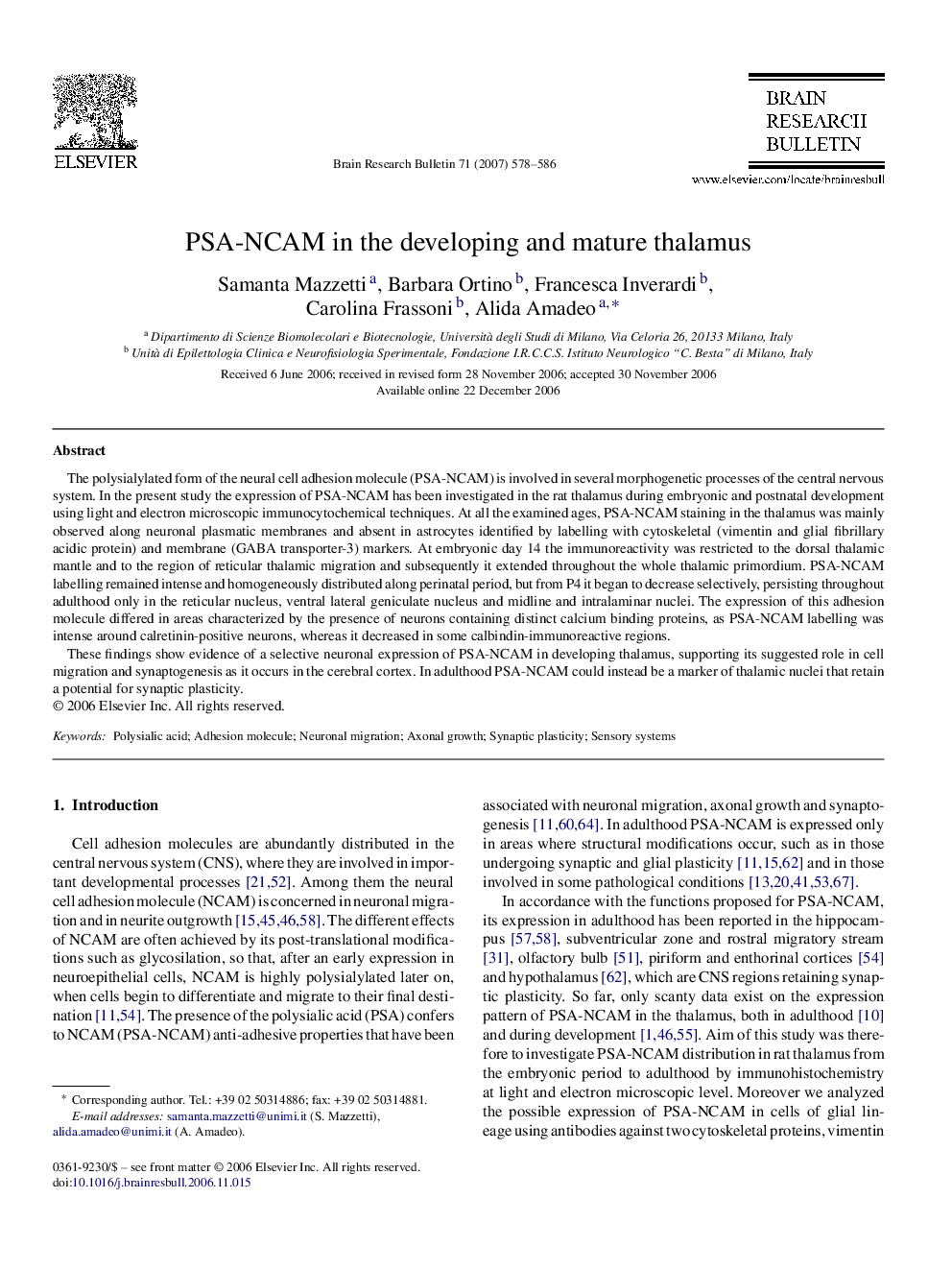| Article ID | Journal | Published Year | Pages | File Type |
|---|---|---|---|---|
| 4320029 | Brain Research Bulletin | 2007 | 9 Pages |
The polysialylated form of the neural cell adhesion molecule (PSA-NCAM) is involved in several morphogenetic processes of the central nervous system. In the present study the expression of PSA-NCAM has been investigated in the rat thalamus during embryonic and postnatal development using light and electron microscopic immunocytochemical techniques. At all the examined ages, PSA-NCAM staining in the thalamus was mainly observed along neuronal plasmatic membranes and absent in astrocytes identified by labelling with cytoskeletal (vimentin and glial fibrillary acidic protein) and membrane (GABA transporter-3) markers. At embryonic day 14 the immunoreactivity was restricted to the dorsal thalamic mantle and to the region of reticular thalamic migration and subsequently it extended throughout the whole thalamic primordium. PSA-NCAM labelling remained intense and homogeneously distributed along perinatal period, but from P4 it began to decrease selectively, persisting throughout adulthood only in the reticular nucleus, ventral lateral geniculate nucleus and midline and intralaminar nuclei. The expression of this adhesion molecule differed in areas characterized by the presence of neurons containing distinct calcium binding proteins, as PSA-NCAM labelling was intense around calretinin-positive neurons, whereas it decreased in some calbindin-immunoreactive regions.These findings show evidence of a selective neuronal expression of PSA-NCAM in developing thalamus, supporting its suggested role in cell migration and synaptogenesis as it occurs in the cerebral cortex. In adulthood PSA-NCAM could instead be a marker of thalamic nuclei that retain a potential for synaptic plasticity.
